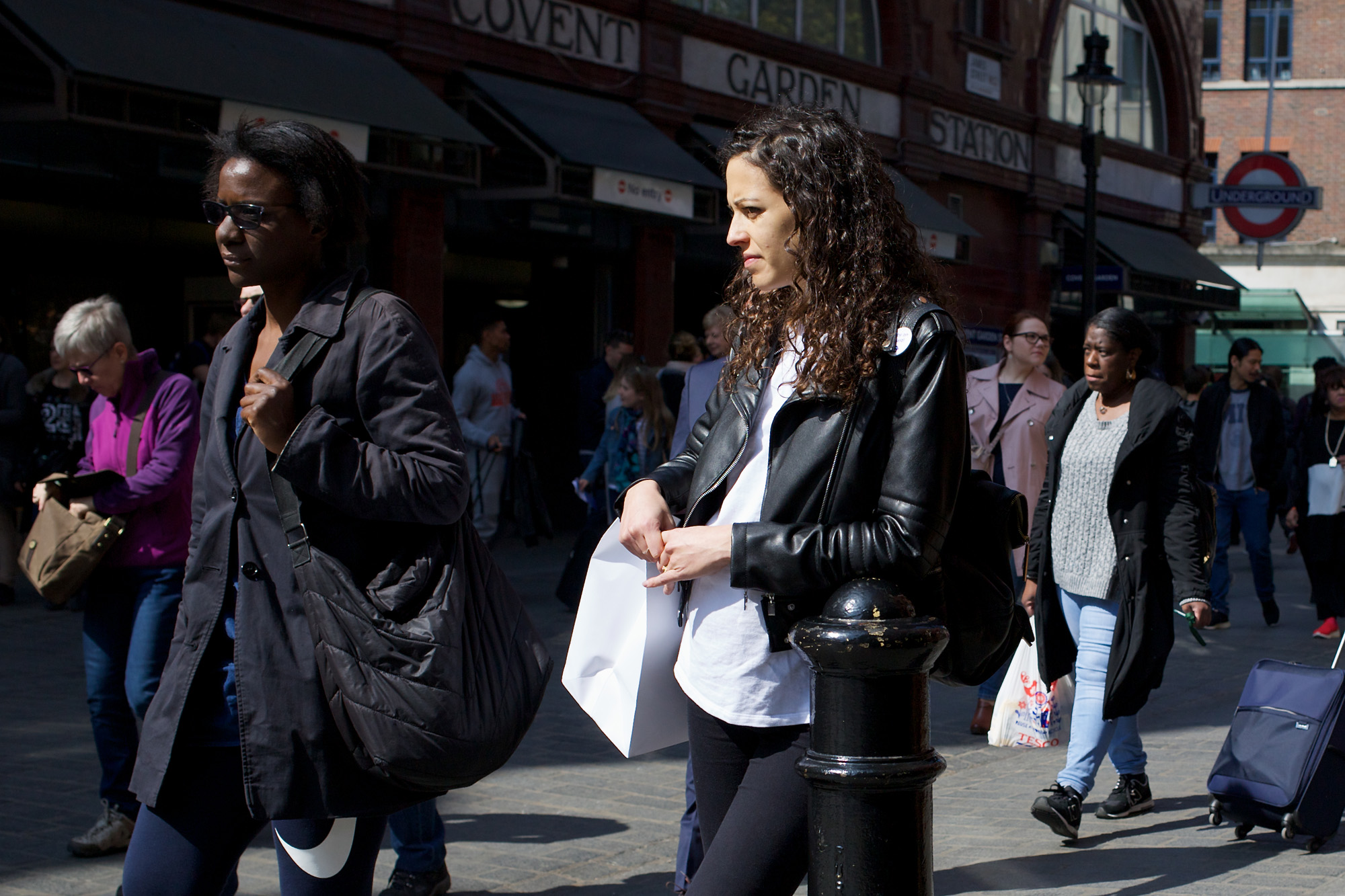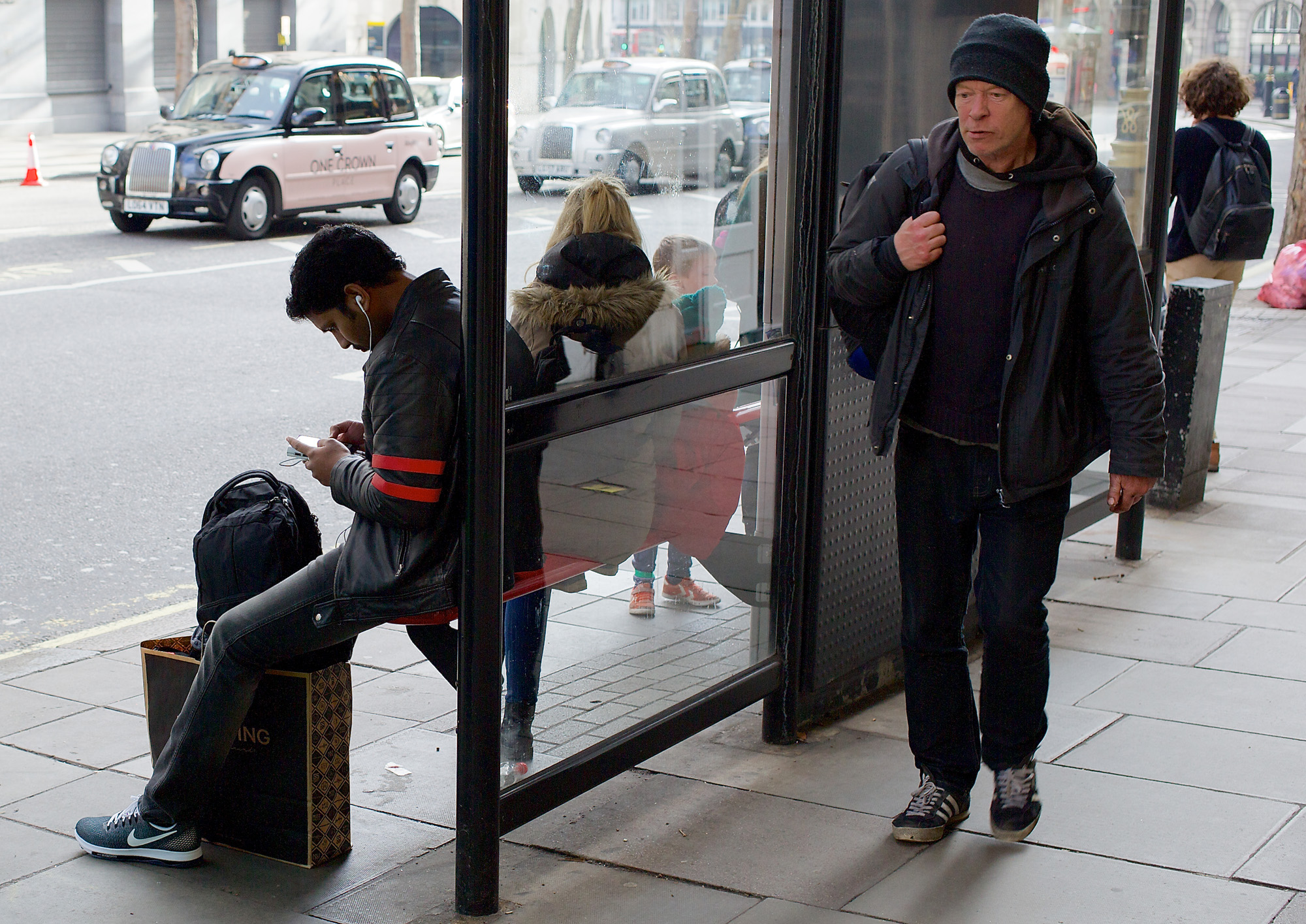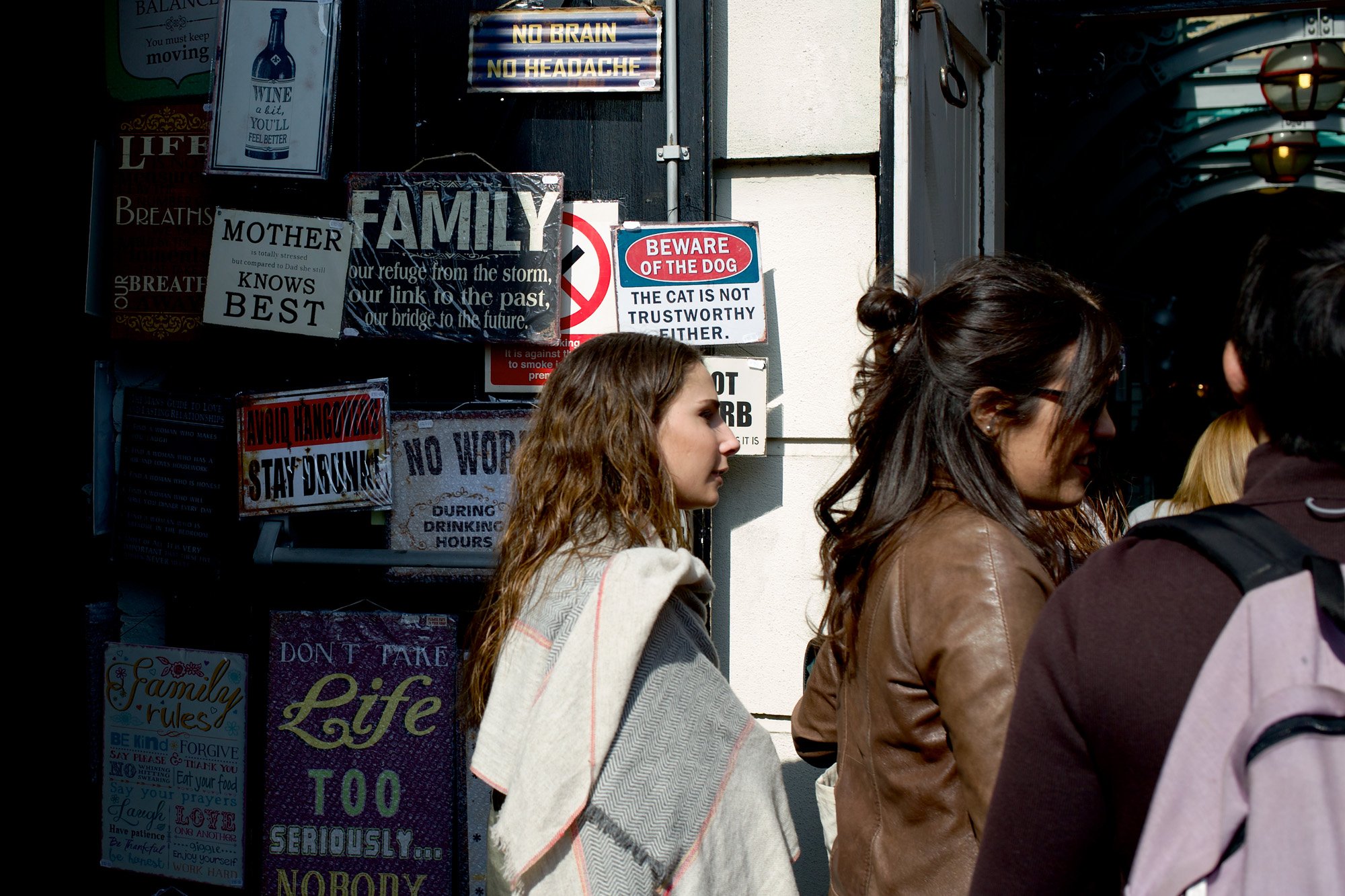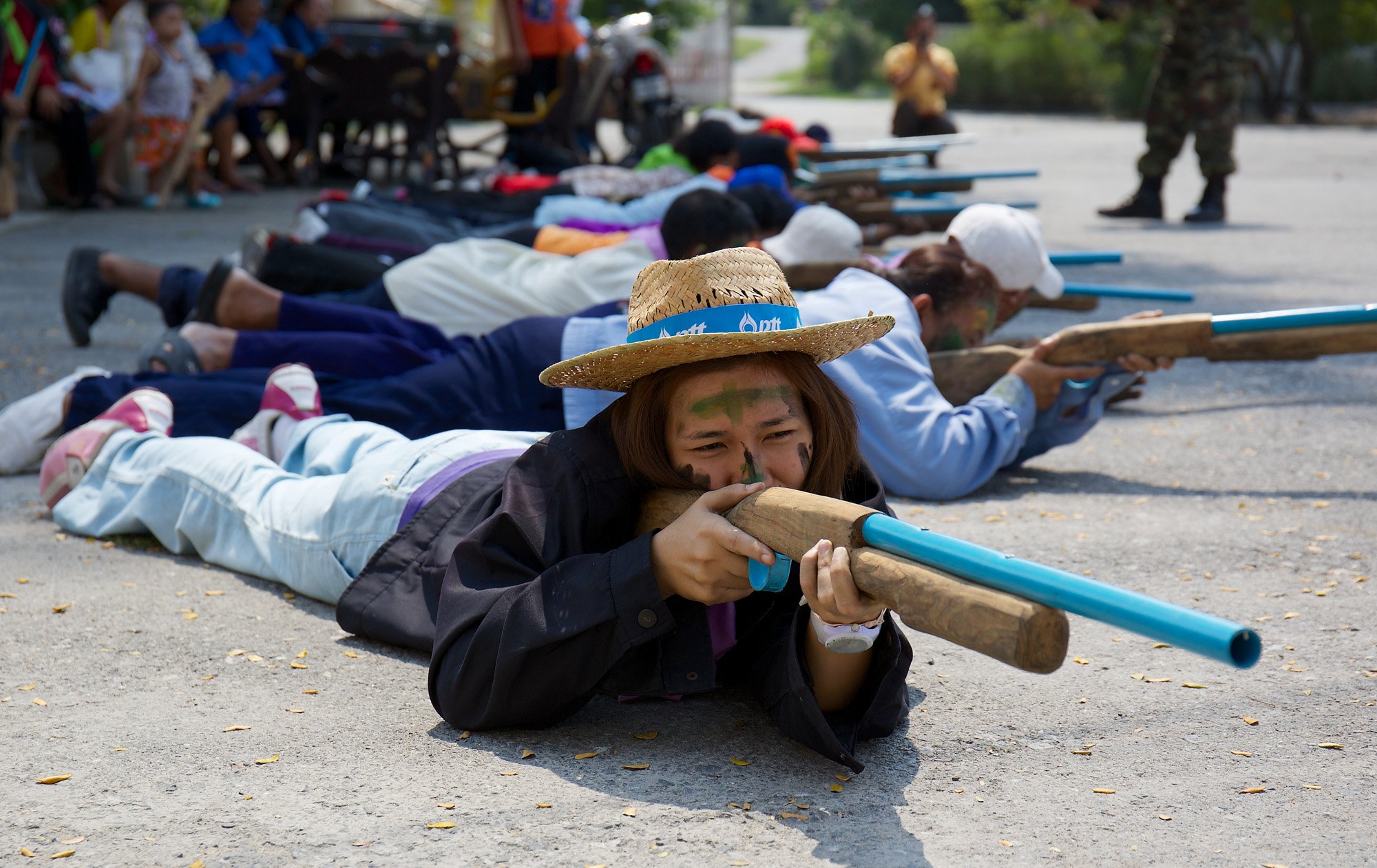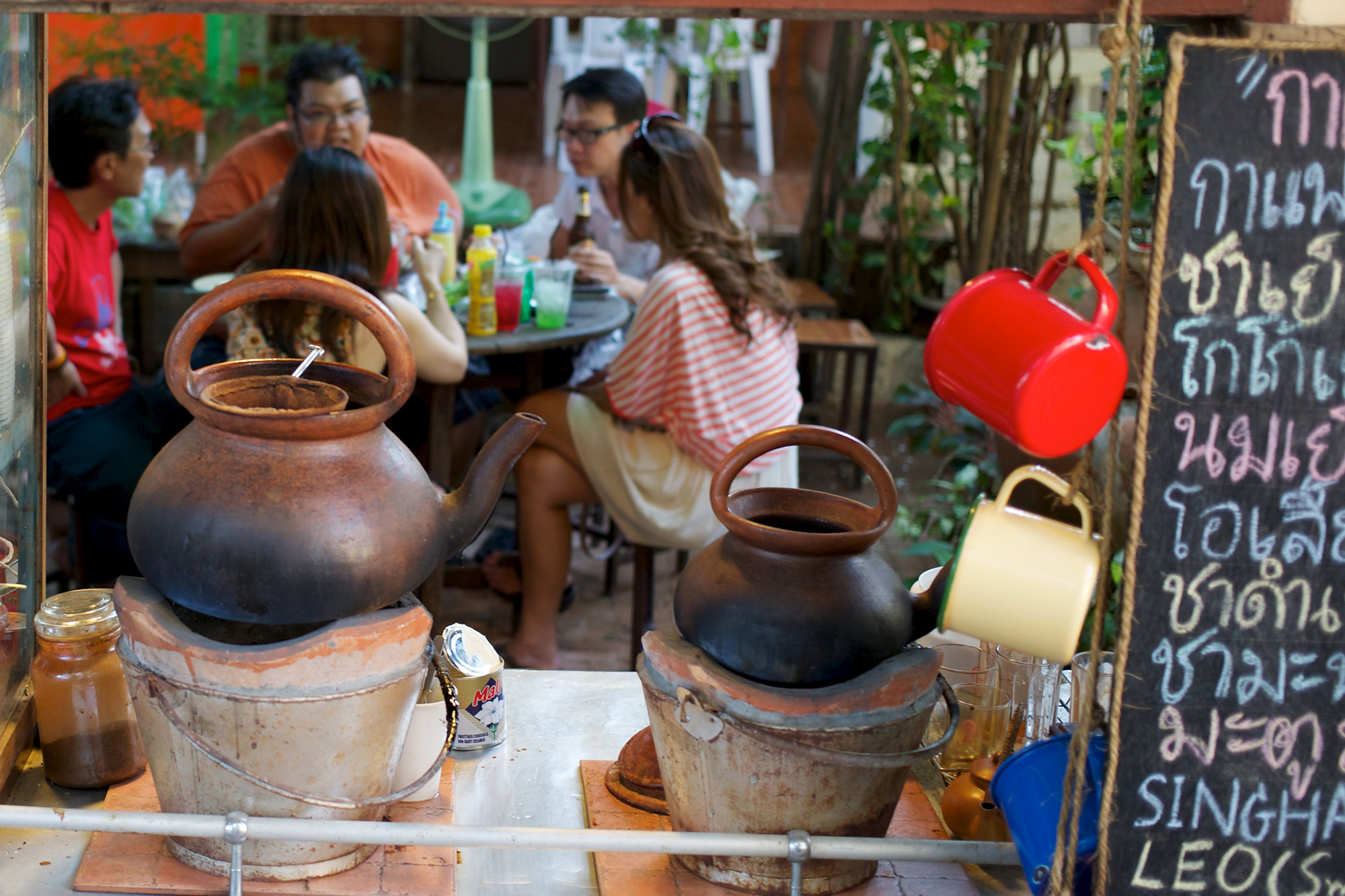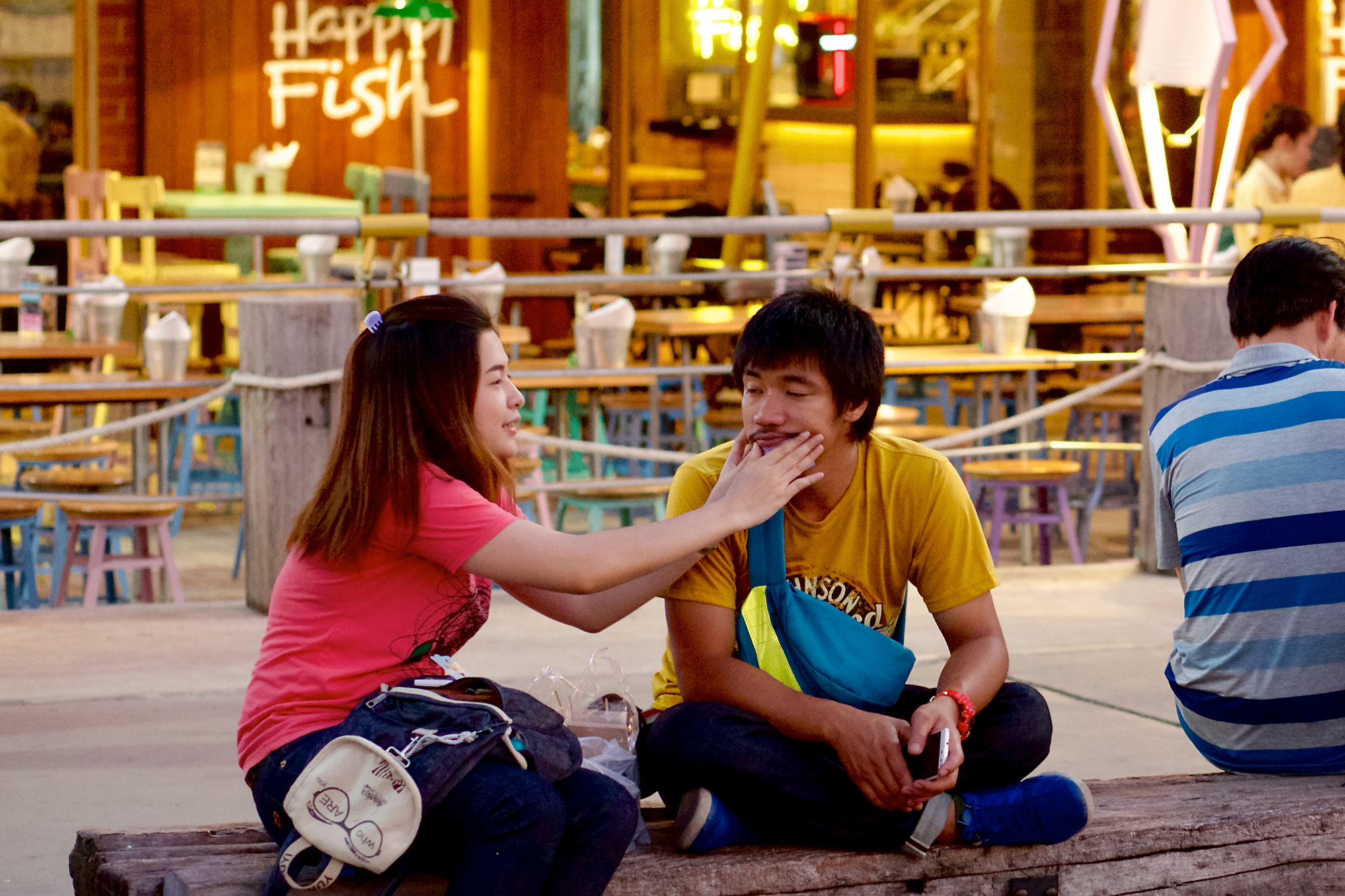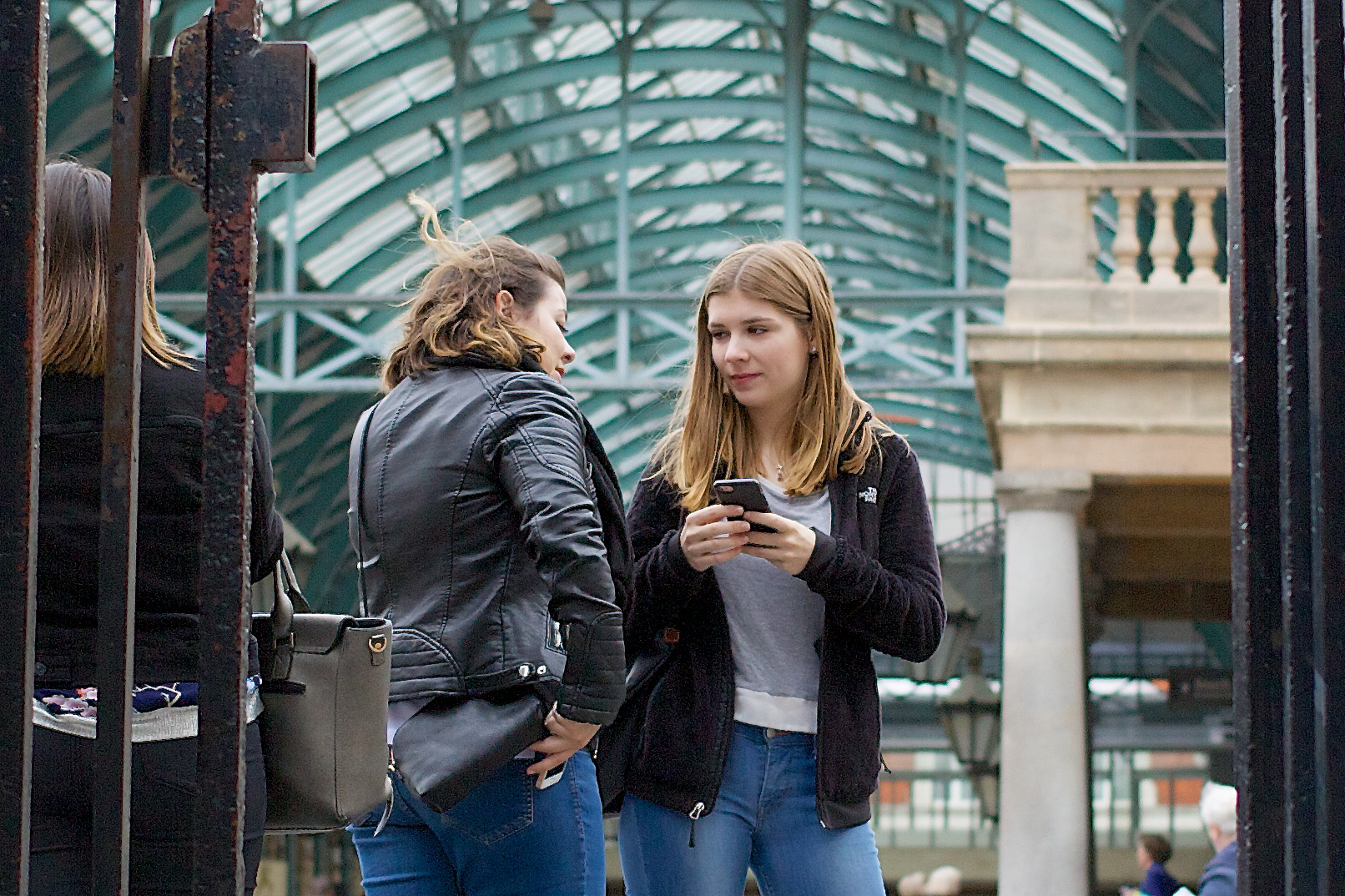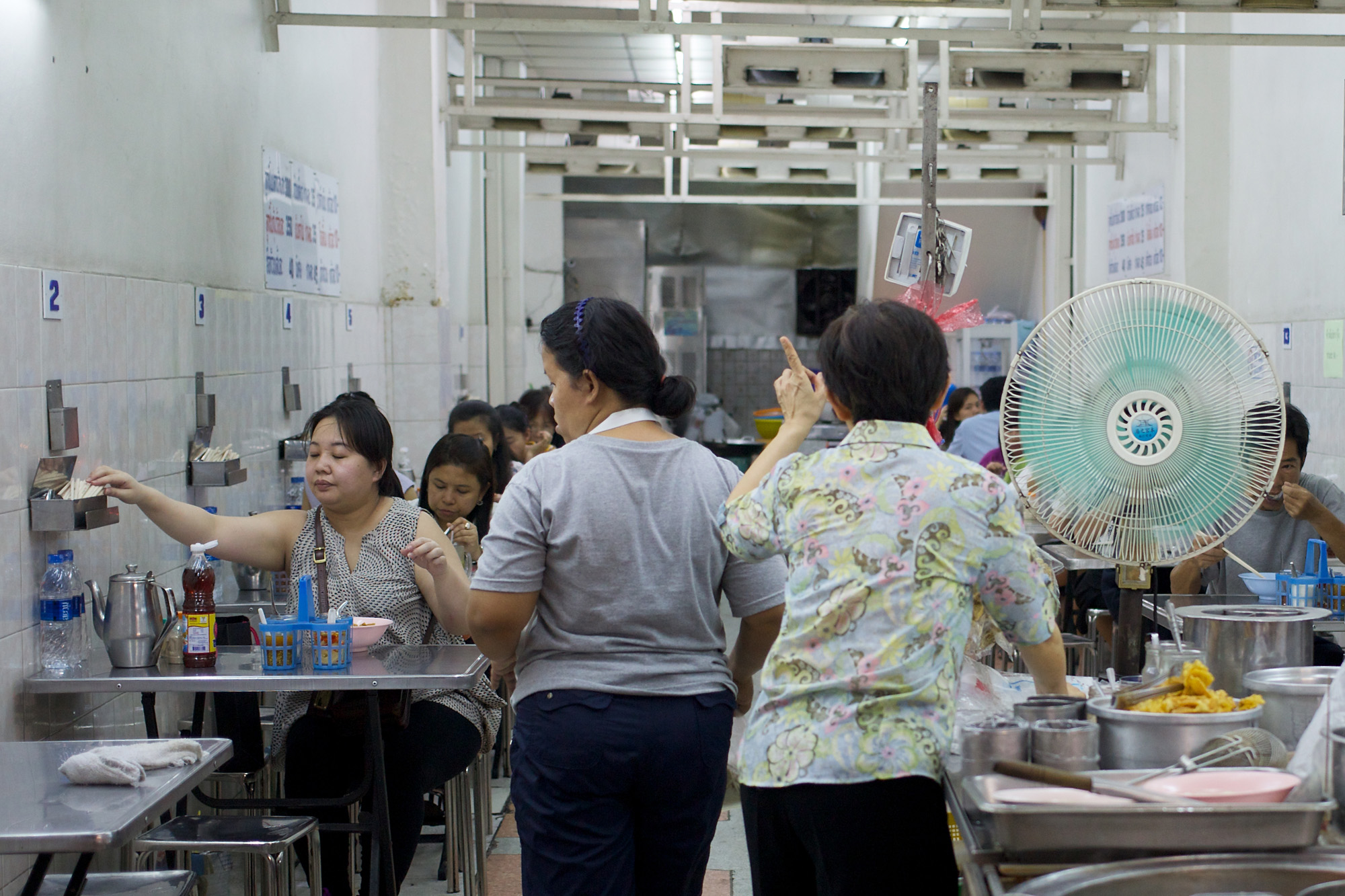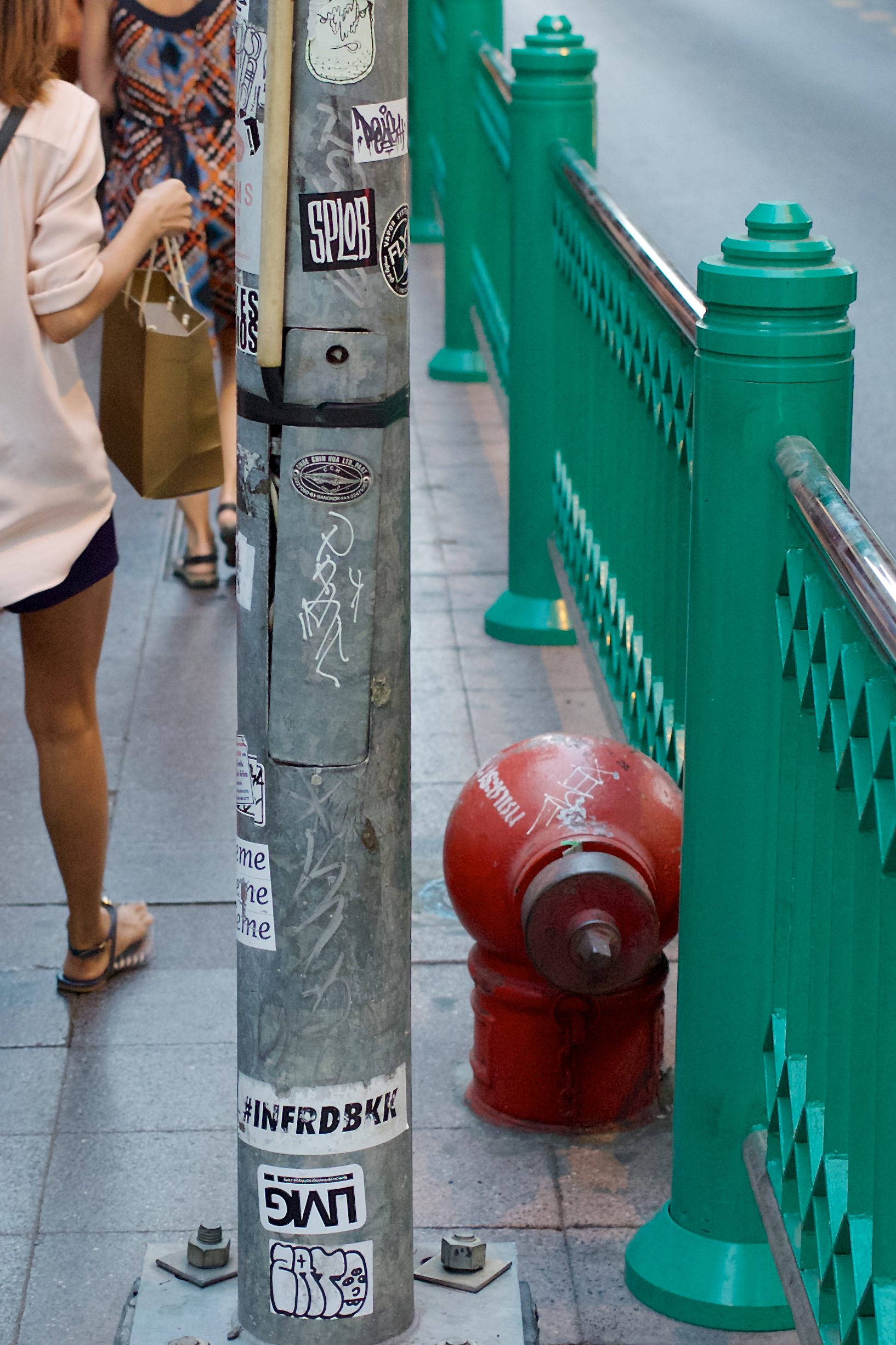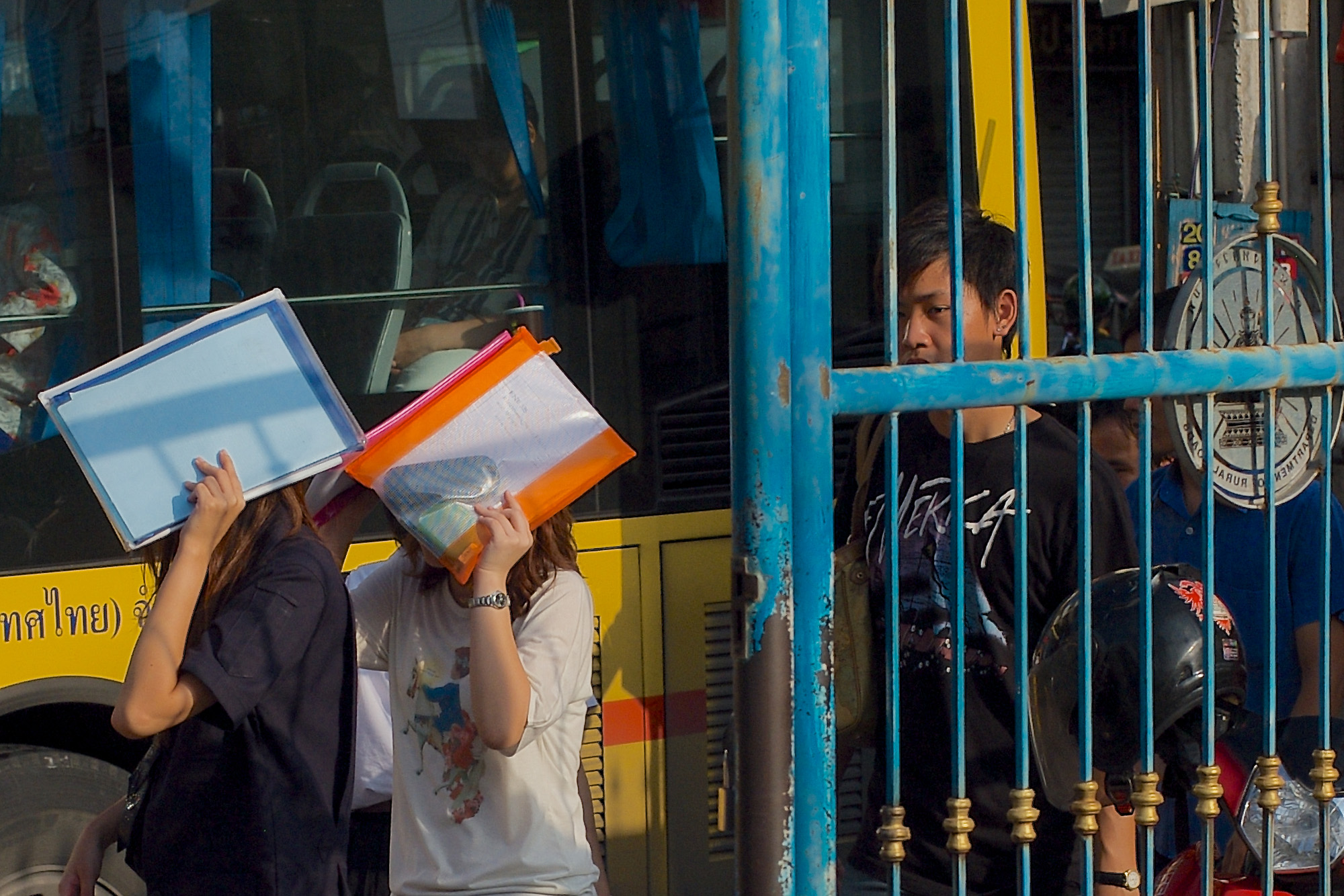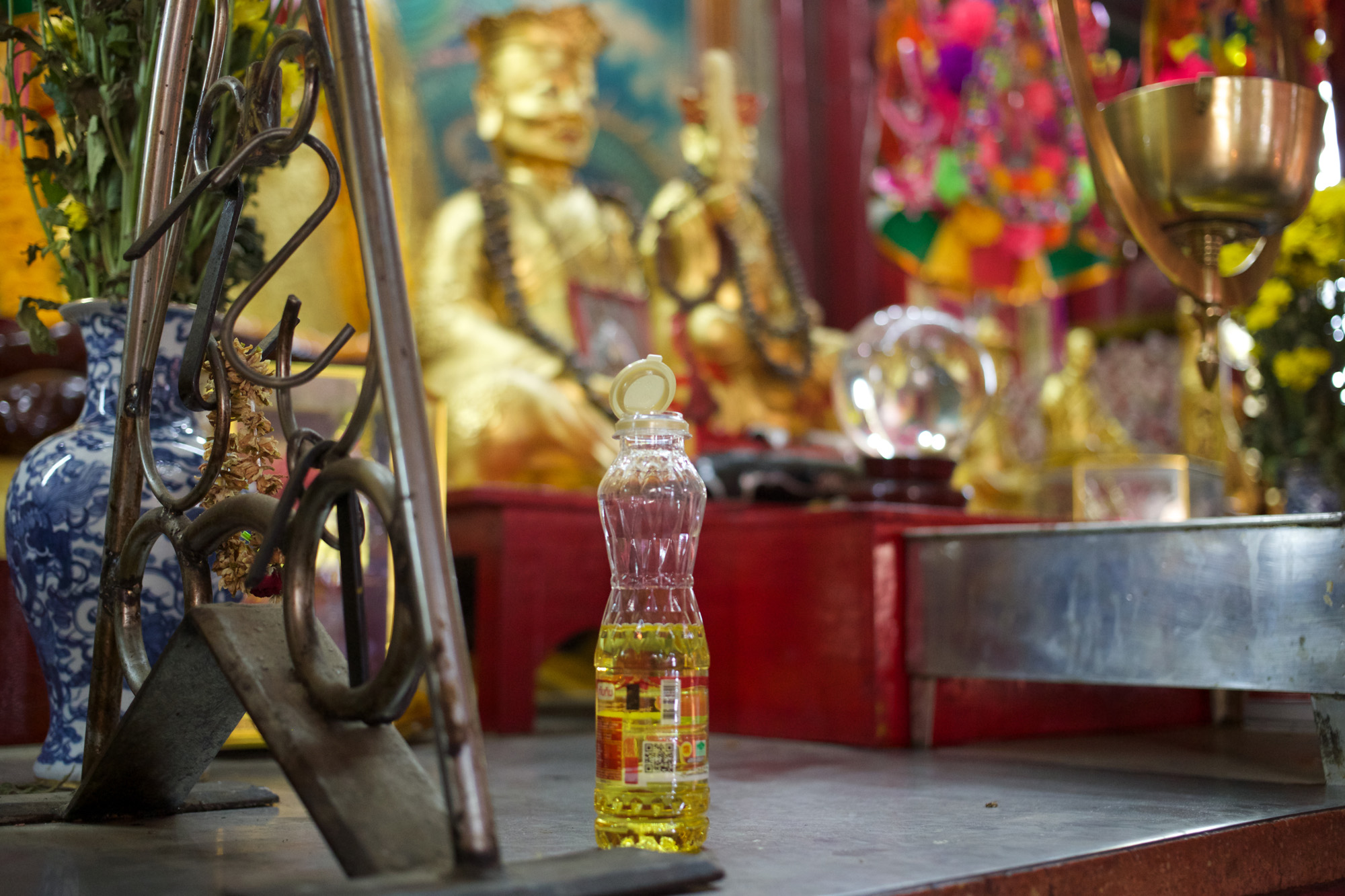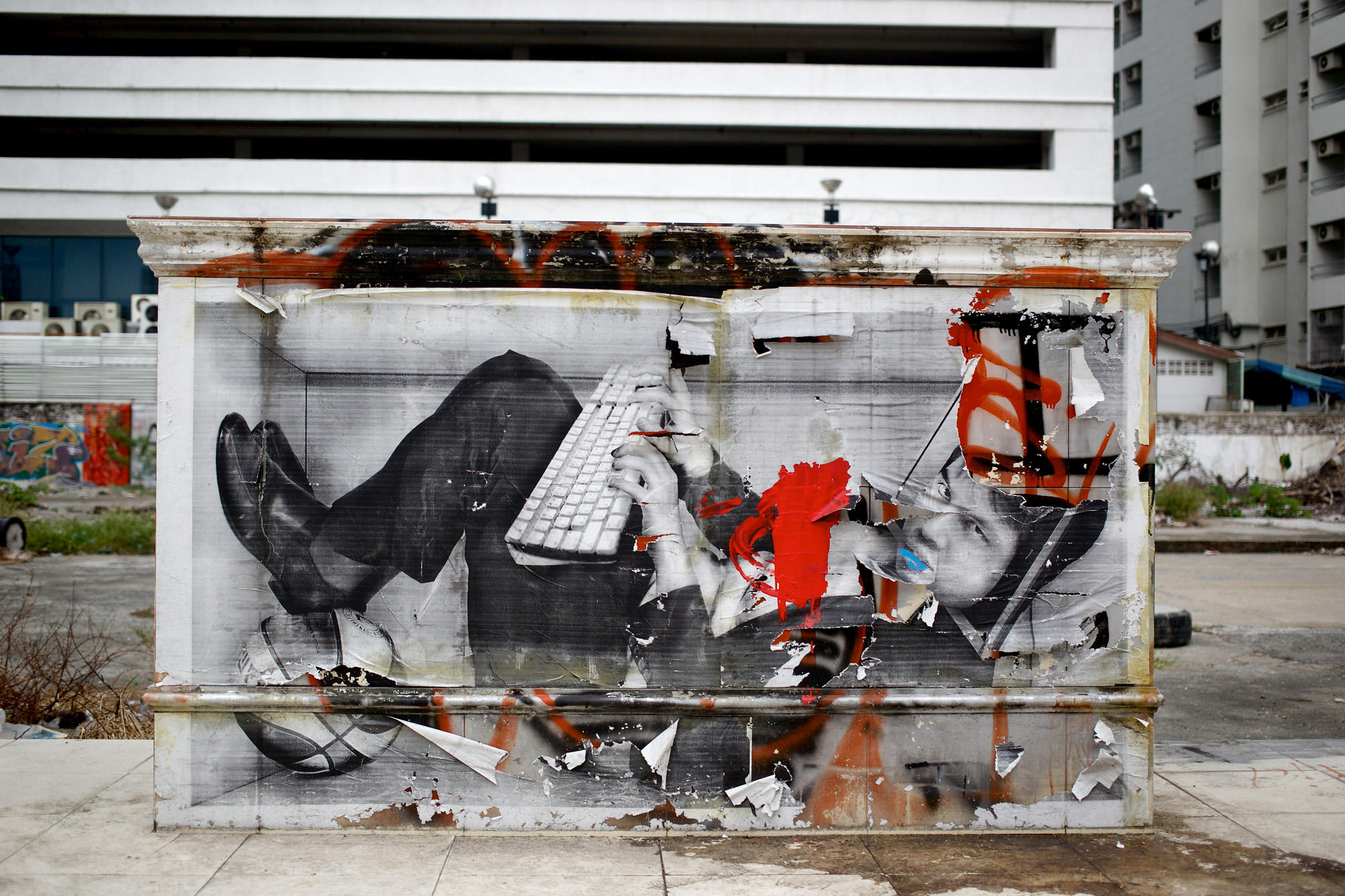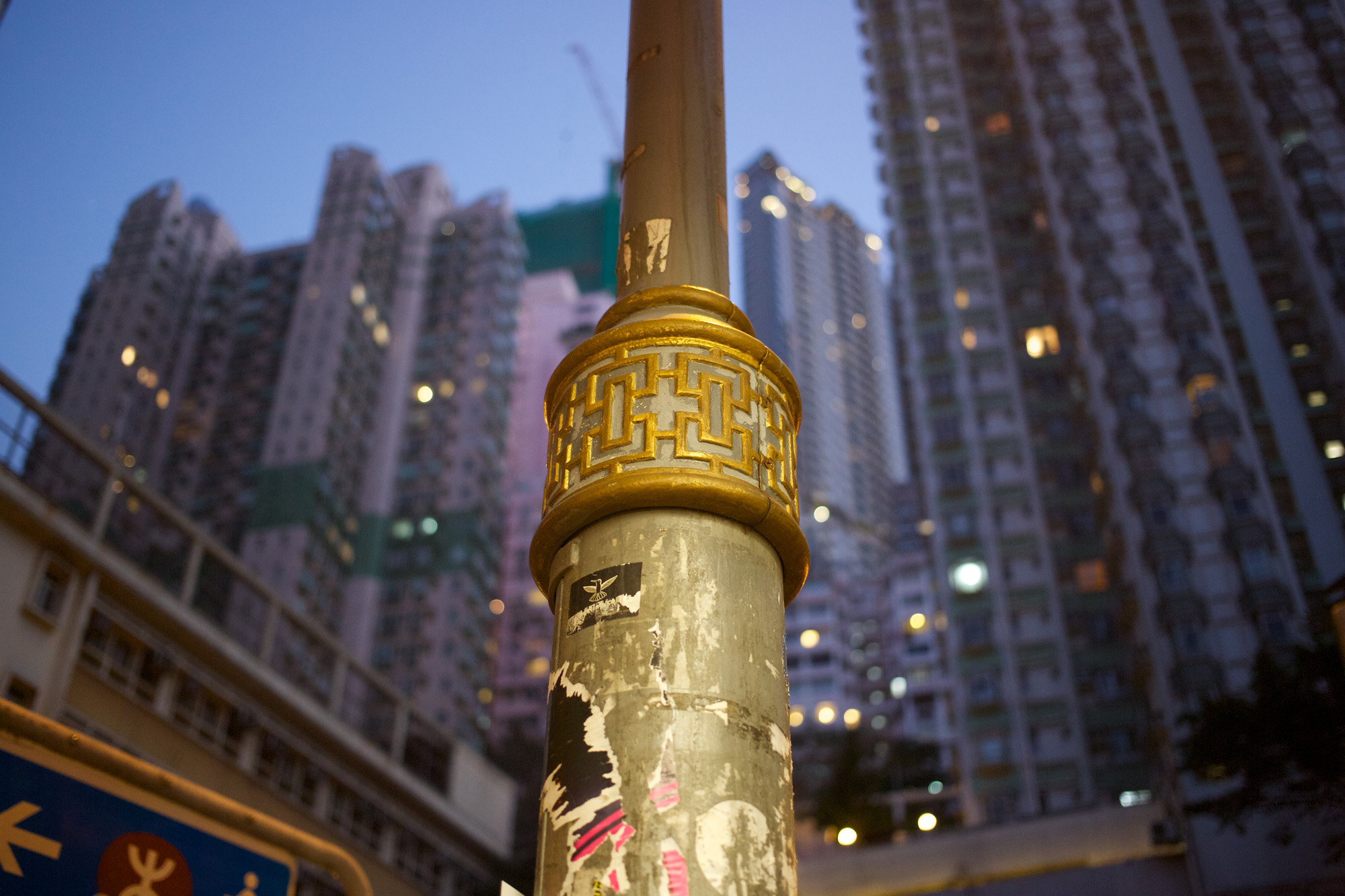When you photograph someone waiting patiently — or impatiently — you’re introducing an element of expectation into your photo. This means the shot is “open-ended,” or not complete in itself. It’s telling a story that will never be completed because no additional images exist to show us whether the subject’s expectation is ever met.
I like the open-endedness of certain still photographs. It creates a similar effect to cutting off the action at the edge of the frame, but in a temporal rather than a spatial sense. In other words it suggests that life will continue in the future — and gives you an indication of exactly how it will continue — as well as suggesting that life extends beyond the frame of the image.
Waiting at the Convenience Store
To be absolutely honest, I’m not exactly sure what’s going on in my featured image “Waiting at the Convenience Store” (above). Is the young woman with the dreamy expression merely waiting for her friend to answer some emails, or are they both waiting for someone to come out of the shop? Maybe they have a friend who owns the scooter next to them. Or perhaps they’re waiting for the man at the ATM to withdraw some money and repay a debt.
The point is: we don’t really need to know the answer. In fact, it’s better if there’s no obvious solution to the puzzle which the image poses. The existence of the “waiting scenario” causes the onlooker to ask questions and invent possible answers. It brings the photo to life.
The passer-by, caught in mid-step, is one of the few active elements in the picture. She scratches her head as if acknowledging the puzzle. A mannequin stands silently and incongruously in the background.
A Woman’s Work
The actress Camryn Manheim (she played Elvis’s mother in the 2005 mini-series) has been quoted as saying: “Waiting, waiting, waiting. All my life, I’ve been waiting for my life to begin, as if somehow my life was ahead of me, and that someday I would arrive at it.”
Throughout history, waiting has been a feminine activity. Women have waited for their husbands to return home from the sea, from work or from war. It was a subject often depicted by painters of “genre works” in the nineteenth and early twentieth centuries.
For example, there’s a fine watercolour called “Awaiting the Return of the Fleet” by the English artist George Goodwin Kilburne (1839–1924). In it, a woman sits patiently on the edge of a rowing boat, her feet on the sand, looking out across the river when the tide is out. No water is visible in the picture. The tide must first return, and with it, perhaps, her man.
Another watercolour, by the Italian painter Arnaldo Ferraguti (1862-1925), is called “The Expectation” and has a similar feeling of dignified frustration and unfulfillment. This time a woman sits high above the water, a posy of flowers and a pair of discarded gloves beside her. The title tells us she’s waiting for someone — not necessarily a man — but you could interpret the image in many ways.
The Times They Are a Changin’
I don’t know who first expressed the idea that waiting was not the best policy for women. Maybe it was the fictional bear: Winnie the Pooh. His creator A.A. Milne put these words into his mouth: “You can’t stay in your corner of the forest waiting for others to come to you. You have to go to them sometimes.”
Women seem have taken this advice to heart. The actress, singer, dancer Kat Graham (of “The Vampire Diaries”) has commented: “There was a time when (a man) thought it was sexy to have a housewife waiting for him to come home from work…but in modern society, I think an independent woman is even more sexy.”
In the image below, all the women look somwhat impatient. The passers-by hurry along to their destination, one of them rummaging as she goes. The young woman who leans against the bollard could simply be enjoying the sun and wondering where to go next. You get the impression she’ll not wait for long.
These days, men, too, have to wait for a while — especially when they go shopping with a female partner. I could have taken any number of pictures of men sitting grumpily in women’s fashion stores while women try on clothes.
Filling Time
Looking through my images I seem to have remarkably few that show men waiting patiently. Even at a bus stop (below), one man has decided to “hoof it” by walking past in the same direction as the buses. The one who stays behind is looking at his mobile phone.
If you seek opportunities to photograph people waiting, the mobile phone is bound to feature in most of your shots. Today, “waiting” has been transferred from remaining in readiness for buses, trains, other people — and so on — to waiting for the Internet to respond. In this sense, the frustration of waiting hasn’t disappeared; it’s just been removed from one origin to another.
My final question is this: can we suggest a profound truth in photographs of people waiting? I think it’s possible. The truth lies in the concept, not the picture.
When you photograph people waiting you show them with their lives “on hold” and hoping for something better in the future. Maybe, in a sense, we all exist in this state of suspense more frequently than we suppose.
Pessimistic since his incarceration in the Bastille, Voltaire wrote: “We never live; we are always in the expectation of living.”
Fortunately, events come to our rescue. Something always occurs to distract us from the endless wait.

